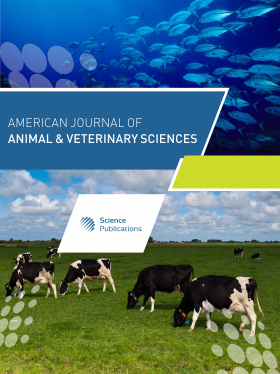Estrous Synchronization Protocols in South African Merino Ewes
- 1 Department of Agriculture, University of Zululand, Private Bag X 1001, KwaDlangezwa, South Africa
- 2 Germplasm Conservation and Reproductive Biotechnologies, Agricultural Research Council, Private Bag X 2, Irene, South Africa
Abstract
The South African Merino breed is the most important sheep breed in South Africa due to its superior wool quality. With an increasing wool demand from China and Europe, the need for wool production in South Africa has risen significantly. To meet this high demand, it is crucial to enhance the reproduction rate of the Merino sheep using assisted reproduction technologies during the spring breeding season when their reproductive performance is low. This study aimed to compare the effects of short- and long-term progesterone treatments with or without eCG on estrus response and hormonal profiles of South African Merino ewes during the spring breeding season. Seventy-six South African Merino ewes aged between 2 and 5 years were divided into two groups: Short (n = 36) and long (n = 40) term progesterone treatment. Controlled Internal Drug Release devices (CIDR) were inserted for 11 days in the short-term group and 14 days in the long-term group. At CIDR withdrawal, half of each group received intramuscular injections of eCG (300 IU) and the other half did not receive it. Blood samples were collected at CIDR insertion and withdrawal and 48 h following CIDR withdrawal to measure progesterone and estrogen levels. One-way Analysis Of Variance (ANOVA) of the SPSS® software was used to analyze the data. Ewes treated with both short and long-term progesterone either with or without eCG exhibited similar estrus response, onset, and duration (p>0.05). Progesterone levels remained consistent across all treatment groups at CIDR insertion, removal, and 48 h following removal (p>0.05). However, estrogen levels were significantly higher at CIDR removal and 48 h following removal (p<0.05) compared to insertion. In conclusion, estrus synchronization with the use of short- or long-term progesterone protocols with or without eCG is effective in synchronizing estrus in South African Merino ewes during the spring breeding seasons.
DOI: https://doi.org/10.3844/ajavsp.2025.8.18

- 4,319 Views
- 1,429 Downloads
- 0 Citations
Download
Keywords
- Equine Chorionic Gonadotropin
- Estrogen
- Estrus
- Long-Term Progesterone
- Sheep
- Short-Term Progesterone
